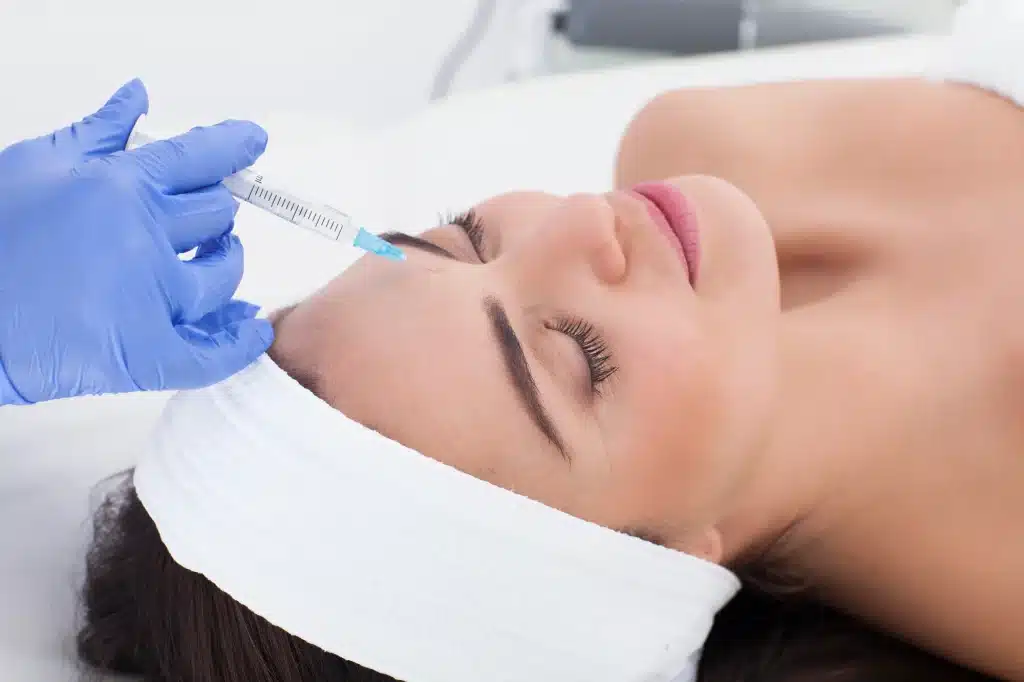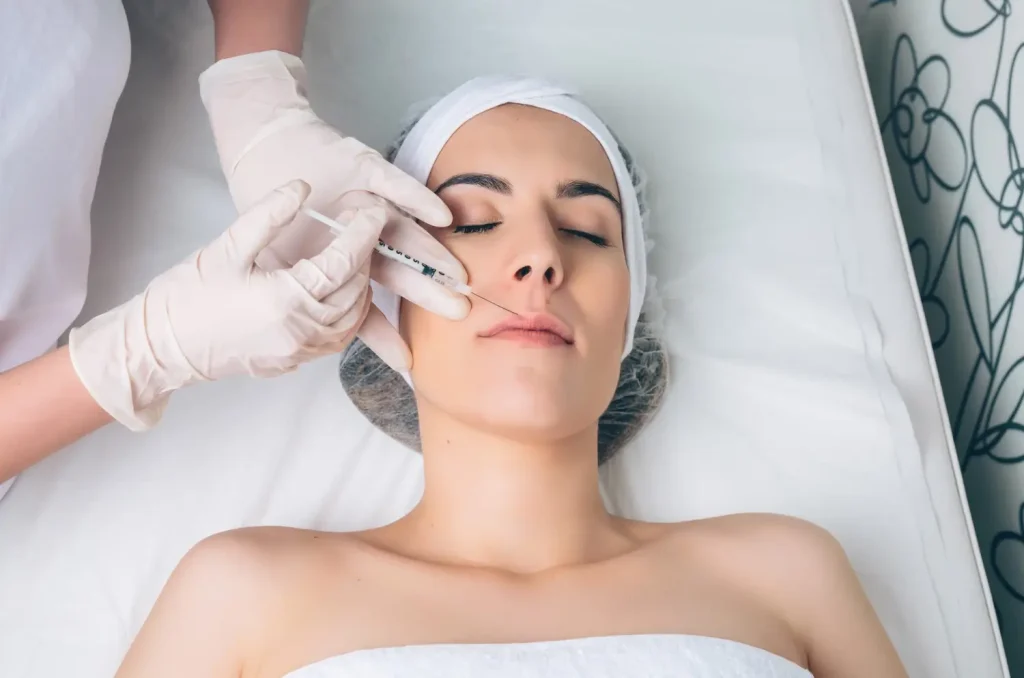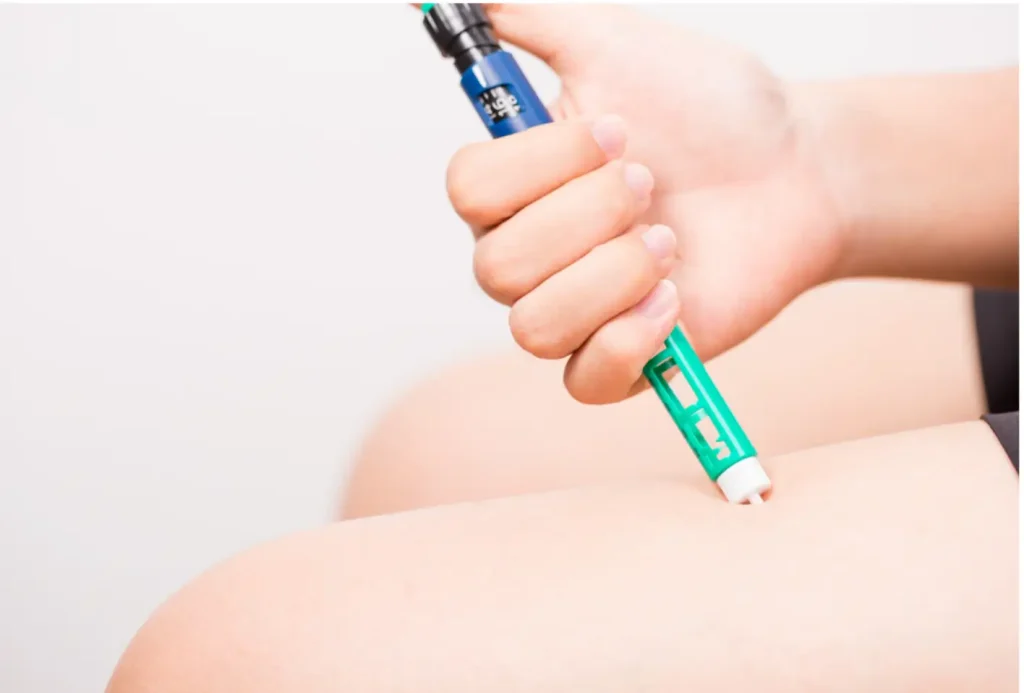Dysport is an injectable preparation of botulinum toxin type A. Botulinum toxin is a neurotoxin that comes from the bacteria Clostridium botulinum. When processed for medical and cosmetic use, botulinum toxin type A provides temporarily muscle paralysis. When used therapeutically, Dysport can help treat issues relating to muscle spasticity, such as blepharospasm (eyelid muscle spasms) and cervical dystonia (involuntary neck muscle contractions and abnormal movement and posture). When used for cosmetic treatment, Dysport can help reduce the appearance of dynamic wrinkles in the face.
Juvederm is a family of hyaluronic acid-based dermal fillers that are used for medical cosmetic procedures to diminish the appearance of aging in the face. Hyaluronic acid is a substance that occurs naturally in the body and that slows in production as we age. It has a great capacity for binding and retaining water molecules, and as such has a huge effect on the skin remaining hydrated and moisturized. The gel fillers are created with various patented technologies that affect the cross-linking of the molecules, which affects the viscosity and elasticity of the gel. Juvederm fillers can be used in the face to treat many signs of aging, including dehydration and dullness, lines and wrinkles, and sagging, volume loss, and restoring facial contours.
Similarities between Dysport vs Juvederm
While Dysport and Juvederm have many differences, there are also some similarities between these two medical cosmetic injections that may lead patients to believe they must choose between the two.
- Improve the appearance of wrinkles – Both Dysport and Juvederm can temporarily diminish the appearance of wrinkles within the face, though they perform this function in very different capacities. By diminishing the appearance of wrinkles, the patient looks younger and more rejuvenated, making both Dysport and Juvederm great treatment options for temporarily improving the signs of aging in the face.
- Treatment areas – Dysport and Juvederm can both be used on the face to address a number of areas. Dysport is primarily used to temporarily correct the appearance of moderate to severe glabellar lines, the vertical wrinkles located on the forehead, and Juvederm can also be used to fill in the lines in this area. Dysport and Juvederm can also both be used to diminish the appearance of crow’s feet, the lines that extend from the outside corners of the eyes. However, Juvederm can be used in many other areas where Dysport is not effective, such as the nasolabial folds (lines that extend from the corners of the nose down to the mouth), marionette lines (lines from the corner of the mouth down the chin), the lips, cheeks, nose, and the jawline.
- Procedure time – Both Dysport and Juvederm injections are performed in-office and do not take very long. All together, facial assessment and the injections themselves for both Dysport and Juvederm should take less than an hour.
- Recovery time – Just as Dysport and Juvederm have short procedure times, they also have little to no recovery time required. As injections with Dysport and Juvederm are non-invasive and involve small needles, the patient is able to get back to most day-to-day activities right away without any downtime. This is a huge benefit of receiving Dysport and Juvederm treatment over surgical options.
- Injector experience – Another of the biggest similarities between Dysport vs Juvederm is that they both should only be administered by medical professionals with experience. An experienced injector will know which product is best for which area, and will be apply to apply injection techniques that will lead to optimal results.
Differences between Dysport vs Juvederm
Though Dysport and Juvederm do have many similarities, they also have some very fundamental differences.
- Ingredients – The active ingredient in Dysport is botulinum toxin A, whereas Juvederm is made using hyaluronic acid.
- Mechanism of action – The different ingredients mean that Dysport and Juvederm also function very differently. Dysport is able to temporarily paralyze muscles, which makes lines and wrinkles go away because the muscle no longer contracts, therefore no lines are formed. Because of this, Dysport may also help prevent lines and wrinkles from developing or getting worse. Juvederm instead acts as a filler. The gel is injected and plumps up the skin, filling in lines and wrinkles.
- Injection technique – Due to Dysport and Juvederm having differences in the mechanism of action, they will need to be injected into the body in a specific manner, in order to work properly. Dysport, for optimal results, is injected intra-muscularly into the exact muscle responsible for creating the wrinkles, whereas with Juvederm, injection is done intra-dermally, into the skin tissue where the lines have formed.
- Duration of results – Dysport and Juvederm also differ in the duration of the effects. Dysport injections take effect within a few days, with peak results showing after 2 to 3 weeks, and can last for up to 4 months. Juvederm injections take effect immediately and can last from 9 months to a year, depending on the product being used.





















